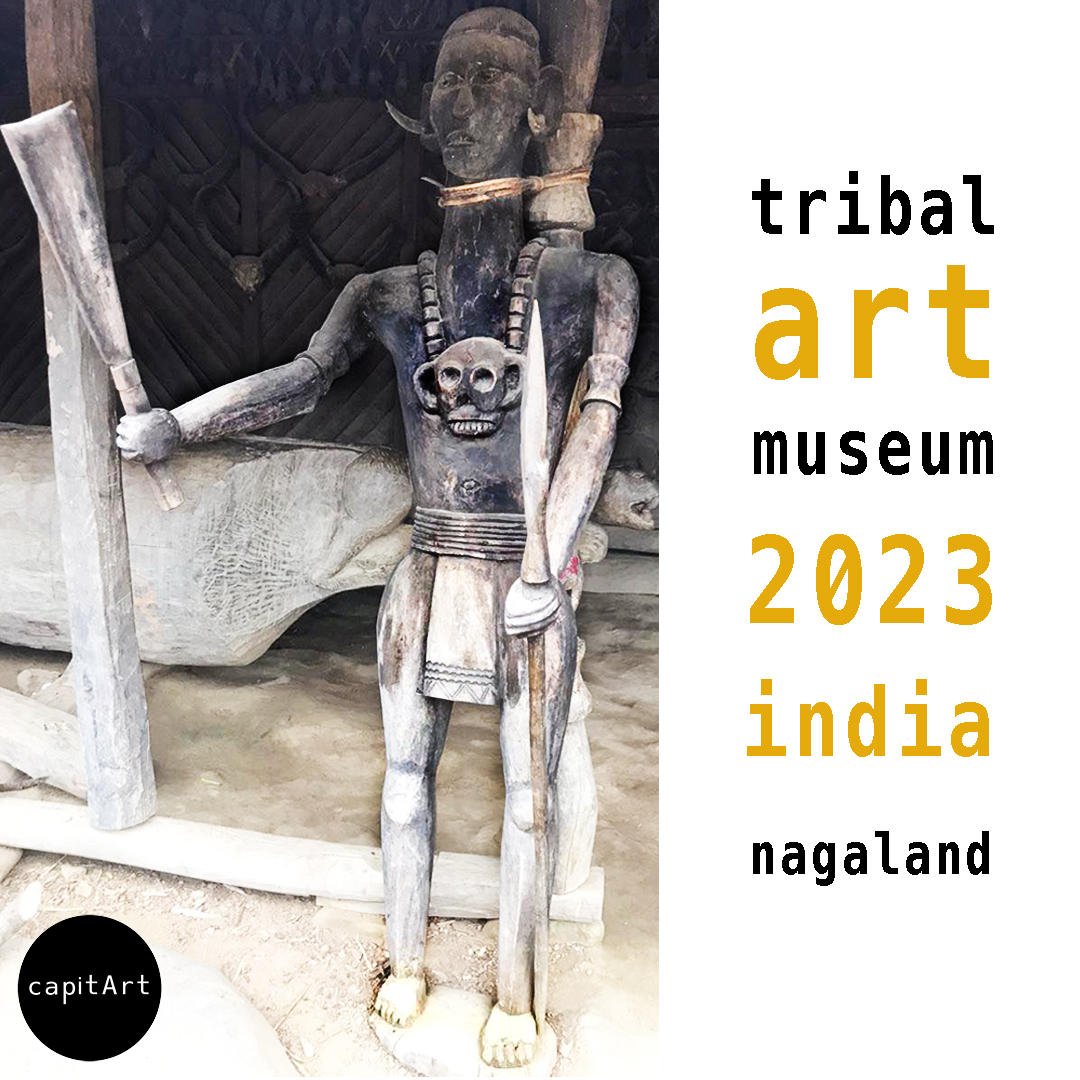Project facts
Presentation
CapitArt has launched the Tribal Art Museum, a cultural heritage conservation and digitalisation, project in Nagaland-India in collaboration with Tribal Art and Textile Museum Society. The project consists of the conservation and curation of artworks and artefacts of the Naga tribes, mainly the Konyak tribe famous for its head-hunting tradition. Tribal sculptures, statues, weapons, ornamented gates, carved walls, pieces of furniture of kings and queens, textile and jewellery that are extraordinary examples of tribal art are taking part in the museum’s collection and soon will be accessible to the public not only in a physical museum in Nagaland but also in a virtual museum accessible for all world-wide.
The Tribal Art Museum project consists of three sub-projects: the conservation of the historical tribal artworks and artefacts, completing the museum building and curating the works in hand, and transforming the physical museum into a virtual museum and creating the world’s first tribal art digital archive open to everyone.
Impacts & Results
Modernization has been taking a toll on tribal cultures. Globalization, homogenization, and pervading influence of capitalist culture are putting intense pressure on tribal people to fit into the conventional cultural frameworks.
Each human community has developed its own ways of living in relation to its surroundings in time. Distinct living traditions provide living communities with a ground to build a sense of continuity in time and are necessary components of cultural diversity and human creativity.
This project is to protect world’s tangible cultural heritage threatened by the contemporary conditions by using contemporary tools. We expect to achieve this objective ● by completing the physical museum building and curating the artefacts for intangible cultural preservation and ● by creating a virtual museum accessible world-wide for cultural diversity awareness.
Please examine our project proposal for more information: Cultural Heritage Conservation and Phygital Museum Curation Project

